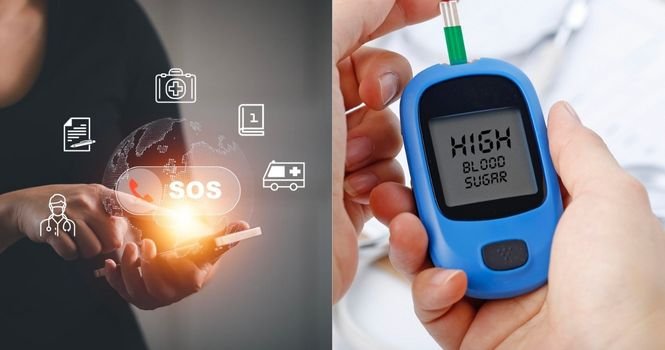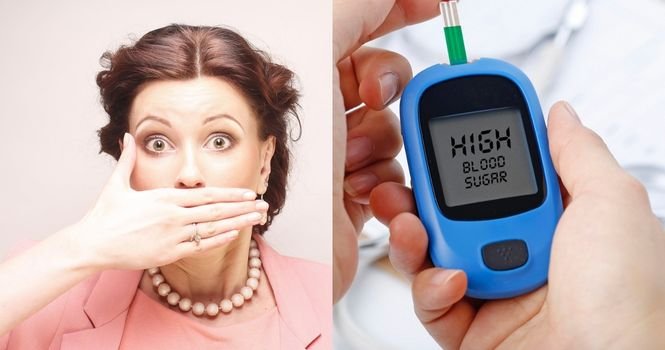Diabetes is a condition characterized by a persistent increase in blood sugar levels. When we talk about a blood sugar level of 600, it falls under the realm of severe hyperglycemia or high blood sugar.
It’s the highest that most glucometers which are used at home can measure.
First and Foremost, if your Blood Sugar is High, You must consult your doctor and work with your healthcare provider to get your blood sugar within normal limits according to your medical condition and age, to avoid the complications.
This is a serious medical condition that demands immediate attention.
This article aims to shed light on the implications of uncontrolled diabetes, the associated risks and symptoms.
Interpreting Blood Sugar Levels
Blood sugar, or glucose, is the primary source of energy for the body’s cells. A normal fasting blood sugar level for a non-diabetic adult should be below 100 milligrams per deciliter (mg/dL).
In people with diabetes, blood sugar levels are usually higher. According to the American Diabetes Association, a fasting blood sugar level between 100-125 mg/dL is considered prediabetes, and anything above 126 mg/dL is diabetes.
If you are not on medications or you are avoiding taking medications to bring your blood sugar down, then it is possible that it may lead to uncontrolled diabetes, depending on your medical history, age and other factors.
Uncontrolled Diabetes can lead to Diabetic Ketoacidosis and Hyperosmolar Hyperglycemic Syndrome.
Let’s see the difference between them,
Complications of Uncontrolled Diabetes
Hyperosmolar Hyperglycemic Syndrome (HHS) and Diabetic Ketoacidosis (DKA) are both serious conditions that can occur as complications of uncontrolled diabetes, but they have several differences and can develop under different circumstances.
Diabetic Ketoacidosis (DKA):
- DKA most commonly occurs in individuals with type 1 diabetes but can also happen in type 2 diabetes under certain conditions.
- It is characterized by high blood sugar levels, the presence of ketones in the blood or urine, and acidosis (high levels of acid in the blood). Ketones are chemicals your body produces when it burns fat for energy, which occurs when there isn’t enough insulin to help your body use sugar for energy.
- DKA often develops rapidly, within 24 hours, and its symptoms can be severe. They can include frequent urination, extreme thirst, nausea and vomiting, abdominal pain, shortness of breath, fruity-scented breath, confusion, and even coma.
- DKA is more common in younger people, and it often occurs as the first sign of type 1 diabetes.
- It can be triggered by an event that causes stress in the body such as infection, illness, or inadequate insulin treatment.
Hyperosmolar Hyperglycemic Syndrome (HHS):
It’s called ‘hyperosmolar‘ because the high blood sugar levels increase the concentration of your blood, and ‘hyperglycemic‘ refers to the extremely high blood sugar levels.
- HHS is most common in individuals with type 2 diabetes, particularly older adults, but it can occasionally occur with type 1 diabetes.
- The primary symptoms of HHS are extremely high blood sugar levels (typically much higher than in DKA), extreme dehydration, and an altered state of consciousness, ranging from confusion to coma.
- Unlike DKA, HHS doesn’t typically involve significant ketone production or acidosis. It does, however, lead to a high osmolarity (concentration) of the blood due to the excessive sugar levels.
- The onset of HHS is often over days to weeks and can be triggered by conditions such as infections, certain medications, heart attacks, or strokes.
- It’s typically more common in older individuals, often those with a poor ability to recognize thirst or limited access to water.
So, in essence, while both conditions result from high blood sugar levels, DKA is typically characterized by high ketone levels and acidosis, whereas HHS involves extremely high blood sugar levels and leads to severe dehydration.
Uncontrolled diabetes can lead to either condition, but the likelihood of one over the other depends largely on the type of diabetes, age, presence of other health conditions, and access to hydration.
For example, older adults with type 2 diabetes are more likely to develop HHS, whereas younger individuals with type 1 diabetes are more likely to experience DKA.
However, anyone with diabetes can potentially develop either condition if their blood sugar levels become excessively high.
Remember to keep your Blood Sugar within normal limits and Consult your Doctor to get yourself checked.










